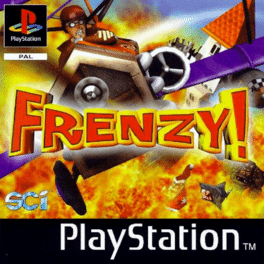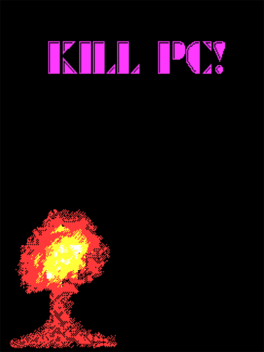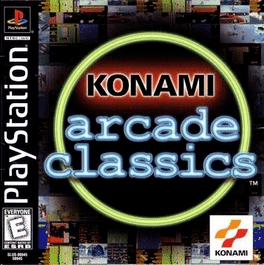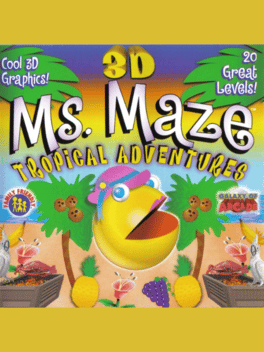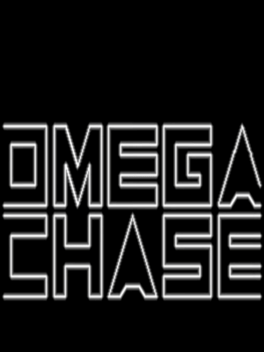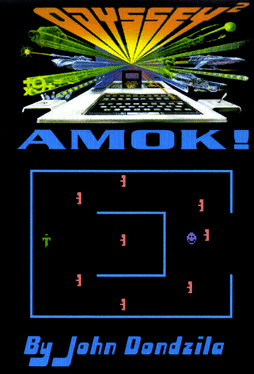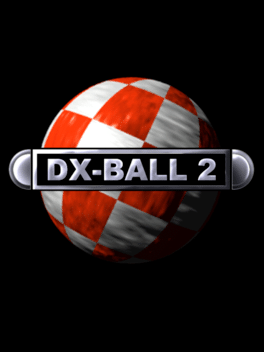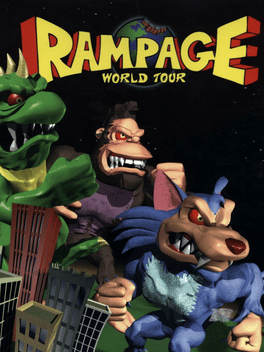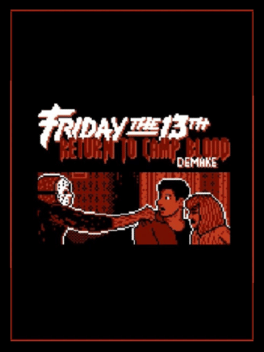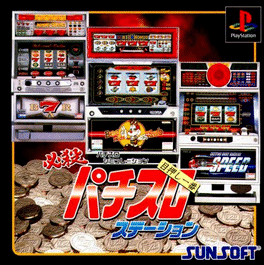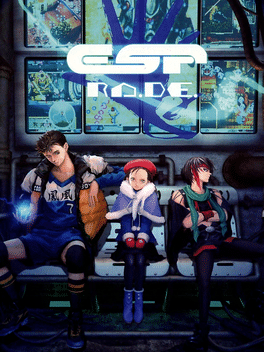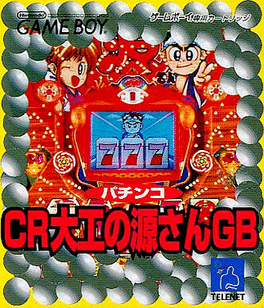Newest Arcade Games - Page 162
-
Frenzy!
1998
Frenzy!
1998
Frenzy! features non-stop mayhem as you swoop, dive and bomb your way to the skies and ultimate glory over nine action packed levels! -
Lovely Girls
1998
Lovely Girls
1998
In this QIX variant, the screen should be filled as complete as possible with a picture of a naked female model. This is done by marking areas on the screen, which then (if there is no monster in them) are filled with the picture. When the player has filled 75% of the playfield the level is completed. The fill-area is marked with a white line, old filled white lines are marked as blue lines. -
Kill PC
1998
-
Konami Arcade Classics
1998
star 8Konami 80's Arcade Gallery is a compilation of arcade video games, originally released to Japanese arcades in 1998. It was later ported to the PlayStation in 1999, which was also released in North America as Konami Arcade Classics. -
This Planet Sucks!
1998
This Planet Sucks!
1998
This Planet Sucks is Greg Troutman's first game for the Atari 2600 and is based on the Taito arcade game Lunar Rescue. Your goal in This Planet Sucks is to rescue colonists trapped on the planet's surface, while avoiding the asteroid belt between your mother ship and the colonists. In addition to fighting gravity and avoiding the asteroids, care must also be taken not to squash the poor colonists you're trying to save! And to make matters worse, the asteroids turn into enemy ships after rescuing a colonist! -
3D Ms. Maze: Tropical Adventures
1998
3D Ms. Maze: Tropical Adventures is a single-player 3D Pac-Man variant that is very similar in style to 3D Maze Man: Amazing Adventures and Lady Cruncher which are from the same developer. In this game the player takes Ms. Maze through twenty tropical themed levels gobbling up many varieties of fruit, avoiding obstacles, using secret passages and conveyor belts while avoiding ghosts unless a power up has been eaten. -
Omega Chase
1998
Omega Chase
1998
Omega Chase (non-deluxe version) is the predecessor to Omega Chase Deluxe and was a download only version of the game. While there are a number of differences between Omega Chase and Omega Chase Deluxe, Omega Chase is included on Omega Chase Deluxe along with the game Zap. The main difference between the two versions of the game is that with Omega Chase, the enemies travel in only one direction around the center of the track, but in Omega Chase Deluxe, the enemies travel from both sides simultaneously. Creator Christopher Tumber felt there was no need to release the original file on cartridge as it was included on the compilation of the game. -
Amok!
1998
Amok!
1998
Amok! was the first Odyssey² new release about 15 years after the console was discontinued. It is inspired by Berzerk. The player is trapped in a spaceship and is armed with a laser pistol, which can fire in all 8 directions. Each stage is a maze with one or more exits, and the player has to try to exit them while avoiding to touch its walls and get killed. Besides the danger of the walls, the player will face the berzerk robot sentinels, which can move about and shoot, but that can also be killed if they touch the walls. After a while, the Smileybot will appear and try to kill the player. The Smileybot can pass through walls and cannot be killed by the player. The game features 12 stages of increasing difficulty. The player has 3 lives; dying will make the player restart the current level, with all berzerk robot sentinels being replaced. -
Dragon Dance
1998
Dragon Dance
1998
Addictive breakout-style action meets fast and furious arcade fun. With 100 levels, challenging end bosses and multiple power-ups, Dragon Dance is the game you can't put down! Head-to-head combat with boss enemies every 10th level. Random events like earthquakes shake up the gameplay. Dragon control and length add to the complexity of each puzzle. Enjoy Vs. mode and play with friends via Game Link Cable. -
DX-Ball 2
1998
DX-Ball 2
1998
star 7.4DX-Ball 2 is a brick buster game for Microsoft Windows, developed by Longbow Games. As a follow up to DX-Ball by Michael P. Welch, the sequel is foremost remarked by the introduction of its 16-bit high-colour engine, presenting textured bricks and background graphics in vivid colours. The game also features two new Power-Ups, an easy to play "Kid-Mode", and a hotseat multiplayer mode, alongside an original soundtrack by SideWinder. DX-Ball 2 also introduces the feature of board-set selection, allowing the player to select between different sets of boards to play. The free demo thereby comes packed with a total of 24 boards divided into 6 board-sets of 4 boards search. Additional board packs can then be installed for more boards, whereas Board Pack 1 will expand the demo board-sets to 25 boards each, for a total of 150 boards. While a total of five board packs were released for the game, DX-Ball 2 was eventually succeeded by Rival Ball in 2001. A 20th Anniversary edition was announced on August 23rd, 2018 and was re -
Rampage World Tour
1998
-
Friday the 13th: Return to Camp Blood Demake
1998
Play as Jason and kill the teenagers at Camp Crystal Lake. -
Asteroids
1998
Asteroids
1998
Unlike Activision's earlier remake of an Atari arcade classic, Battlezone, this one stays close to its namesake. Take the original, Atari coin-op game Asteroids, add in the features of the Atari 2600 cartridge, then give it 3-D graphics and a bunch of power-ups, and you've got Activision's Asteroids remake. There are three types of ships to choose from, each with different strengths and weaknesses. There are also three skill levels. If you beat the game at Expert or higher, you gain access to a fourth type of ship. All ships features the standard laser, shield, flip (instantly flips your ship 180 degrees), and hyperspace. There are also limited power-ups you can pick up such as GunSat, Mines, Homing Missiles, Plasma Drill, and Trigger Bombs. The game supports either one or two players. In two player mode, the object is to simply outscore your opponent in a random zone and level. You cannot directly kill your opponent by shooting him, but there are other ways.... Lastly, if you shoot the classic-style asteroid in -
Namco Anthology Vol.2
1998
This is the second volume of one of the series of Namco game compilations, released only in Japan. This anthology is similar to the "Namco Museum" series except that this collection include games that have been released on consoles originally. Each disc includes 4 games and, along with each of the games, there were also updated versions of those. This volume includes: - Pac-Attack (The updated version of this game was also included as an unlockable extra game in "Pac-Man World 2") - Valkyrie no Bouken: Toki no Kagi Densetsu - Namco Classic II (Golf) - King of Kings -
ESP Ra.De.
1998
ESP Ra.De.
1998
ESP Ra.De. (エスプレイド) is a 1998 arcade game developed by Cave and published by Atlus. It is the first non-DonPachi game released by Cave. ESP Ra.De. received spiritual prequels in the form of the Espgaluda series; however, ESP Ra.De. is related to the Espgaluda series only by shared name and programmer Tsuneki Ikeda. -
Pachinko CR Daiku no Gen-san GB
1998
A pachinko game for Game Boy, based on the Hammerin' Harry series. -
Bust-A-Move 2: Arcade Edition
1998
Bub and Bob are back! Like in Tetris in reverse, you shoot bubbles at an array of different-colored bubbles stuck in an ever descending ceiling, attempting to match them up three by three to make them disappear. This edition contains both puzzle challenges, multiplayer and normal progressive stages. -
Let's Pachinko: Nante Gindama
1998
Let's Pachinko: Nante Gindama is a view-limited Downloadable game for the Satellaview that was broadcast in at least 2 runs between February 1, 1998 and November 28, 1998. Early game broadcasts were accompanied by the Let's Pachinko: Seiseki Magazine, however these ceased after February 28, 1998.
